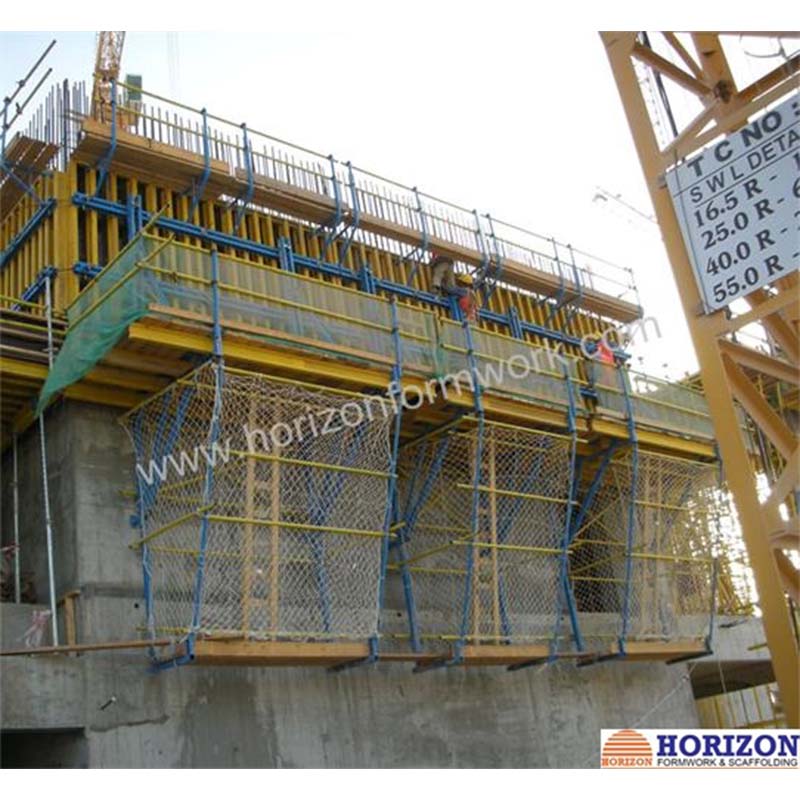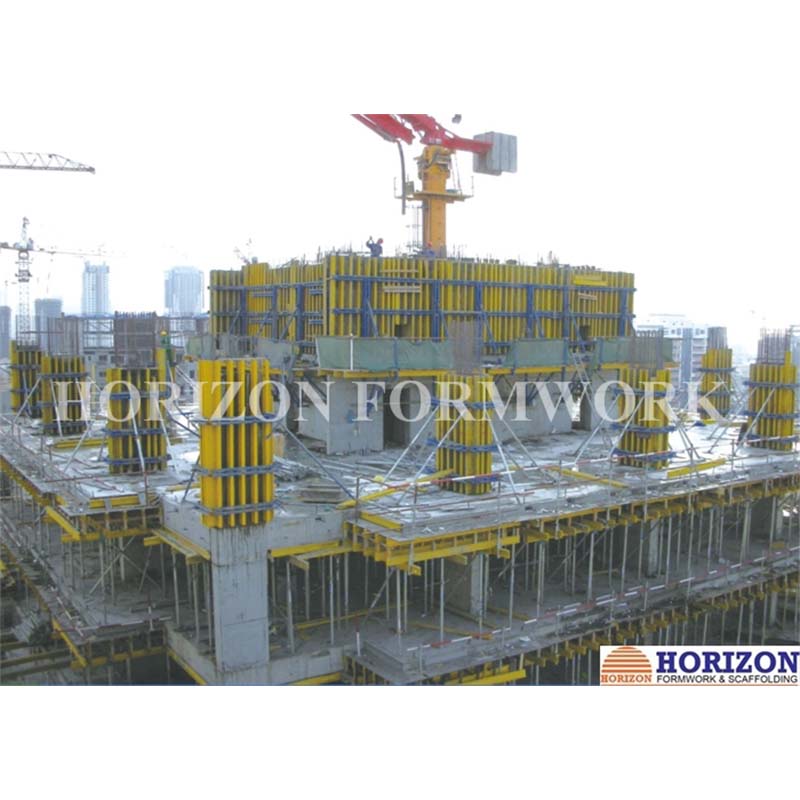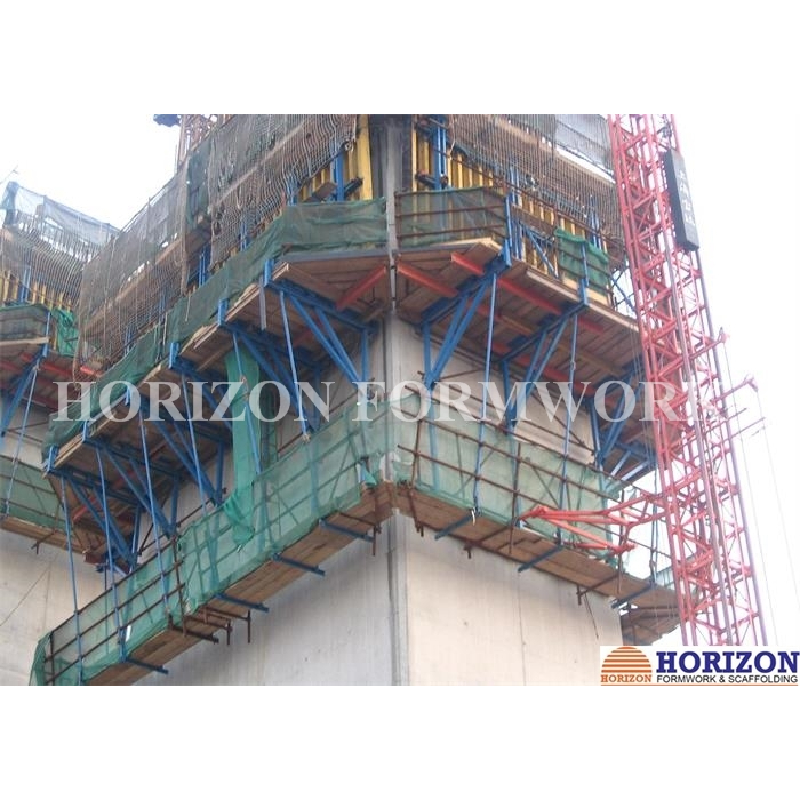Hul . 26, 2025 04:01 Back to list
High Quality Climbing Formwork for High-Rise Buildings & Core Walls
Accelerating vertical construction with cutting-edge climbing formwork technologies from China.
Explore Climbing Formwork CB240 →




What is Climbing Formwork?
Climbing formwork, also known as climbing system formwork, is a highly specialized construction solution that enables the efficient and safe formation of vertical concrete structures such as core walls, bridge pylons, and high-rise building facades. This system either relies on cranes (crane-dependent) or hydraulic mechanisms (self-climbing) to "climb" upward as each new section of concrete is poured and cured.
Typical applications include climbing formwork for high-rise building cores, climbing formwork for core wall systems, and advanced self-climbing formwork setups for skyscrapers and infrastructure projects.
Industry Trends: The Evolution & Demand of Climbing Formwork Globally
According to industry forums and the American Concrete Institute, the climbing formwork sector sees rapid technological growth, driven by increased urbanization and the demand for taller, more complex structures (Structure Magazine Forum). The latest trends include:
- Adoption of self-climbing formwork systems, which reduce crane dependency and overall labor costs;
- Integration of digital monitoring and safety automation in china climbing formwork system offerings;
- Customized OEM solutions for developers (OEM self climbing formwork system, OEM climbing scaffolding bracket);
- Emphasis on semi-automatic and automatic climbing options for project-specific flexibility;
- Higher safety and cost-efficiency benchmarks required by modern construction standards.
Climbing Formwork - Technical Parameters (Comparison Table)
| System Type | Max Formwork Height (m) | Platform Width (m) | Load Capacity (kN/m²) | Climbing Method | Application |
|---|---|---|---|---|---|
| Climbing Formwork CB240 | 5.40 | 2.4 | 4.5 | Crane Dependent | High-rise, Core Wall |
| Self-Climbing Formwork | 6.00 | 2.3 | 4.0 | Hydraulic (Automatic) | Tall Buildings, Bridges |
| Semi-Automatic Climbing Formwork | 5.70 | 2.2 | 3.8 | Cranes + Mechanized Jacks | Infrastructure, Tall Walls |
| Climbing Scaffolding Bracket | 5.00 | 2.0 | 3.2 | Manual/Cranes | Pier, Bridge, Façade |
Product Highlight: Climbing Formwork CB240
The Climbing Formwork CB240 from HORIZON FORMWORK CO., LTD. stands as a pinnacle solution merging safety, strength, and adaptability. It is a crane-dependent climbing system engineered for high-rise and infrastructure projects demanding robust climbing scaffolding bracket support.
- Max Platform Length: Designed for vertical structures over 100 meters high
- Formwork Height: Up to 5.40 meters
- Bearing Capacity: 4.5 kN/m², supporting heavy loads and safe access
- Applications: Core walls, elevator shafts, shear walls, and bridge pylons
- Compliance: Meets international safety norms and installation standards
- As a leading china climbing formwork system supplier, HORIZON offers full OEM and customized climbing solutions.
Core Technical Indicator Comparison (CB240 vs. Competitors)
CB240 Main Parameter Distribution
Application Scenarios
- High-rise building core walls (climbing formwork for core wall): Streamlining the construction of rigid vertical concrete zones in skyscrapers.
- Shear walls and bridge pylons: Size-adaptable systems supporting high lateral and vertical load-bearing capacities.
- OEM climbing scaffolding bracket integrations for complex infrastructure (bridges, towers, and industrial plants).
- Customized OEM formwork climbing anchors and OEM climbing formwork for core wall in large municipal developments.
- Large-scale civil engineering: Where repeated, rapid upward movement of formwork yields time savings and labor optimization.
Key Advantages of Modern Climbing Formwork Solutions
- Safety Efficiency: Fully integrated working platforms with guardrails. Self-climbing formwork boosts safety by automating the climbing process, reducing manual labor.
- Fast Cycle Time: As reported by journal studies, climbing systems can reduce floor cycle time by up to 30% compared to conventional scaffolding.
- Customization: China climbing system formwork supports extensive OEM tailoring for unique building geometries and local construction standards.
- Structural Adaptability: Modular climbing scaffolding bracket, multiple platform levels, and extendable supports enable industry-wide versatility.
- Quality Control: Precision alignment during each climbing stage delivers superior wall finishes and accurate dimensions.
- Environmental Considerations: Reuse of the same system components across multiple projects supports sustainability.
Expert FAQ: Understanding Climbing Formwork
1. What materials are typically used for climbing formwork systems?
Climbing formwork primarily utilizes high-strength steel frames, galvanized structural components, and plywood or steel formwork panels. For areas exposed to severe loads, Q235/Q345 steel grades are favored for their durability and resilience.
2. What are standard specifications for the climbing brackets?
OEM climbing scaffolding bracket usually features bracket heights of 1.8-2.4m, load-bearing capacities of 3.2–6.0 kN/m², and widths from 1.8m to 2.4m, compatible with international scaffolding standards.
3. What are the typical installation standards for climbing systems?
Installation must comply with EN 12812, EN 12811, as well as local safety codes. Core anchorage devices (OEM formwork climbing anchors) must be pre-installed to ensure stability and safe climbing transitions.
4. How does the self-climbing mechanism operate?
Self-climbing formwork functions via integrated hydraulic cylinders or electric motors. These actuate the entire rig upward along embedded anchor rails, independent of external cranes.
5. What are the main application scenarios for climbing formwork in high-rise construction?
The most common utilization is for climbing formwork for high-rise building cores, elevator shafts, and large retaining walls—areas requiring repeatable rising sequences and secure operator access.
6. How do China’s systems compare with global climbing formwork standards?
Modern china climbing formwork system products leverage modular design, robust quality assurance, and global OEM customization. Leading suppliers like HORIZON ensure compliance with EU/US standards while maintaining cost competitiveness.
7. Are climbing systems customizable for OEM needs?
Yes. Suppliers such as HORIZON FORMWORK CO., LTD. provide OEM self climbing formwork system and OEM climb scaffolding tailored to architectural demands, local load requirements, and specific installation restrictions.
- Website: https://www.horizonform.com
- Product page: Climbing Formwork CB240
- Phone: +86 186 1762 1636 / +86 319 3188757
- Email: sales@horizonform.com
- Address: Hustpark Building No. 4, Zhongxing East Street, Xingtai, Hebei, China
[1] Concrete International, "Recent Advances in Climbing Formwork Systems," American Concrete Institute, 2023. Download PDF
[2] Structure Magazine Forum, "Climbing Formwork in Tall Buildings: Design and Performance." Read Online
[3] ScienceDirect, "Innovations in formwork for high-rise concrete structures," Journal of Building Engineering, 2021. View Article
[4] Taylor & Francis, "Climbform - Modern Concrete High-Rise Solutions." Visit Source
[5] Manufacturer insights: HORIZON FORMWORK CO., LTD.
This is the last article
-
High Quality Climbing Formwork for High-Rise Buildings & Core Walls
NewsJul.26,2025
-
High Quality Climbing Formwork for High-Rise Building & Core Wall Solutions
NewsJul.25,2025
-
High-Quality Slab Formwork Solutions for Efficient Construction
NewsJul.24,2025
-
High-Quality Wall Formwork Systems for Versatile Concrete Construction
NewsJul.23,2025
-
Climbing Formwork Solutions for High-Rise Construction Efficiency
NewsJul.22,2025
-
Premium Table Formwork for Slab Construction | Reusable & OEM Support
NewsJul.22,2025